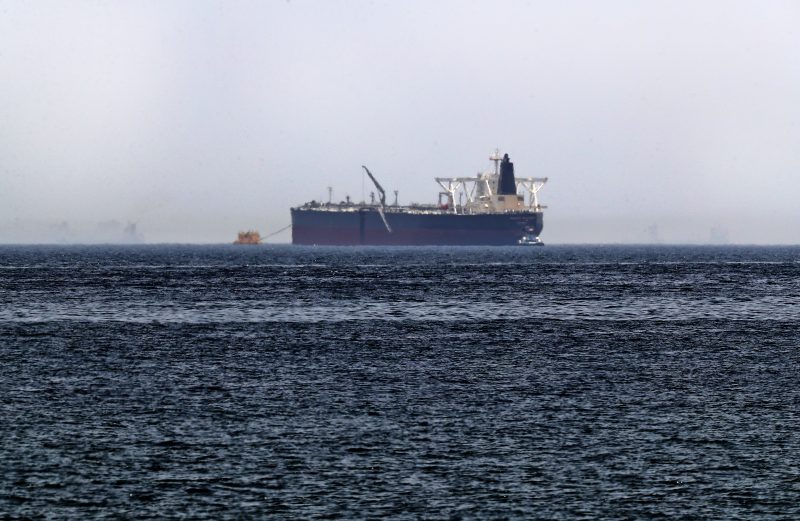Attacking Gulf oil routes exposes alternatives to Hormuz
Four ships including two Saudi oil tankers were damaged in mysterious sabotage attacks Sunday off the emirate of Fujairah (KARIM SAHIB)
Dubai (AFP) – Attacks on Saudi and UAE oil assets built to bypass the Strait of Hormuz, a strategically important waterway in the Gulf, have raised fears that alternative routes could be vulnerable.
Four ships including two Saudi oil tankers were damaged in mysterious sabotage attacks Sunday off Fujairah, an emirate located at the crucial entrance to the Gulf.
That incident was followed by drone strikes Tuesday by Yemen’s Huthi rebels on a major Saudi oil pipeline, which provided an alternative export route if the Strait of Hormuz closed.
Iran has repeatedly threatened to prevent shipping in Hormuz in case of a military confrontation with the United States, which has imposed sanctions on Tehran in recent months.
Iran’s armed forces chief of staff Mohammad Bagheri warned last month “other countries’ oil will certainly not cross the strait” if Tehran’s own exports are blocked.
Almost all the oil exports of Saudi Arabia, Iraq, the United Arab Emirates, Kuwait, Qatar and Iran itself, at least 15 million barrels per day, are shipped through the Strait of Hormuz.
– ‘Not practical’ –
“I think that the existing alternative routes for oil exports are not sufficient and not practical,” Kuwaiti oil expert Kamel al-Harami said.
“Most importantly, these routes are away from the main markets in Asia,” Harami told AFP.
Non-oil imports worth hundreds of billions of dollars also pass through Hormuz, making it one of the most vital maritime links in the world.
Halting navigation in Hormuz, a narrow chokepoint at the mouth of the Gulf, would likely send oil prices soaring to over $100 a barrel and substantially disrupt supplies, he said.
Crude was trading at $72.80 per barrel at 0400 GMT on Friday.
Gulf states, mainly Saudi Arabia and the UAE, have been working on alternative routes to bypass the strait.
Riyadh has built a 1,200-kilometre (750-mile) East West Pipeline, able to pump five million barrels of oil a day from Saudi’s Eastern Province to a Red Sea port.
The kingdom is working to raise its capacity to seven million bpd.
The UAE has also built a 406-kilometre pipeline from Abu Dhabi to the emirate of Fujairah on the Arabian Sea, outside Hormuz, which has a capacity of 1.6 million bpd.
Fujairah boasts a huge storage area capable of holding some 70 million barrels, with a second such facility in the works there for 42 million barrels.
– Regional tensions –
Other Gulf states have built smaller storage in countries such as South Korea.
“Saudi Arabia has positioned itself as a safe, reliable supplier of oil. The attacks challenge this position,” Houston-based oil expert Anas Alhajji wrote on Twitter.
He described the attacks as “significant” since these pipelines aim to reduce Iran’s influence on the oil flow by bypassing Hormuz.
Alhajji however insisted that Saudi oil installations are well-protected and the attackers focused on the most remote, most vulnerable installations.
Oil transit was disrupted in 1984 during the Iran-Iraq war (1980-1988) when more than 500 vessels were destroyed or damaged in the so-called “Tanker War”.
Regional tensions have soared since US President Donald Trump pulled out of a nuclear deal with Iran a year ago and imposed a stifling oil embargo on the Islamic republic.
“Markets will always be jittery after a threat to chokepoints, and this can go well beyond oil prices, as many other commodities pass the Strait of Hormuz,” Karen E. Young, from the American Enterprise Institute, told AFP.
Although the Gulf oil exporters will be the main losers, the closure would also punish Asian oil importers — mainly China, Japan and South Korea — which depend for more than half of their energy needs on Middle East imports.
Disclaimer: Validity of the above story is for 7 Days from original date of publishing. Source: AFP.


